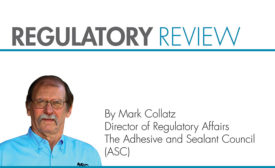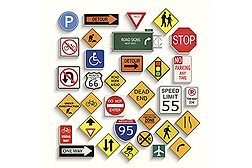Articles by Mark Collatz
Regulatory Revew
Final legislation could require the EPA—for the first time—to make a decision about whether a new chemical would ever pose an unreasonable risk.
Read More
Regulatory Review
Adhesive labels for packaging face increased regulations in California
OEEHA has published its final revision to the Prop 65 labeling laws
November 3, 2016
Regulatory Review
At Long Last, TSCA Reform Passes
The House of Representatives has passed the Frank R. Lautenberg Chemical Safety for the 21st Century Act—but is it enough?
July 1, 2016
Regulatory Review
Transparency through an Agency Website? Maybe Not.
The Office of Environmental Health Hazard Assessment’s (OEEHA) new website could create more confusion for the public at the expense of those doing business in California.
May 2, 2016
Regulatory Review
The TSCA Miracle of 2015
Passage of the Toxic Substances Control Act (TSCA) is almost a reality.
February 1, 2016
Regulatory Review: Examining the recent U.S. Environmental Protection Agency (EPA) policy decision concerning chlorinated paraffins
While the term collateral damage generally refers to some type of military activity, it also bears resemblance to a recent U.S. EPA policy decision.
November 1, 2015
Regulatory Review: TSCA Reform - The Time is Now
Any further compromise will most likely lead to the falling away of considerable industry support.
May 1, 2015
Regulatory Review: Into the West
California will be an area of considerable focus for the adhesives and sealants industry in 2015.
February 2, 2015
Regulatory Review: Signs of Potential Prop 65 Revisions and their Impact for the Adhesives and Sealants Industry
An explanation of some of the core elements of a Prop 65 revision currently under consideration.
November 1, 2014
Regulatory Review: Adhesives Manufacturers Blindsided from the Left Coast
While the easier approach might be to look the other way and let a handful of impacted manufacturers fight this battle alone, I'm not sure it would be a wise one.
July 1, 2014
Keep the info flowing with our eNewsletters!
Get the latest industry updates tailored your way.
JOIN TODAY!Copyright ©2025. All Rights Reserved BNP Media.
Design, CMS, Hosting & Web Development :: ePublishing







